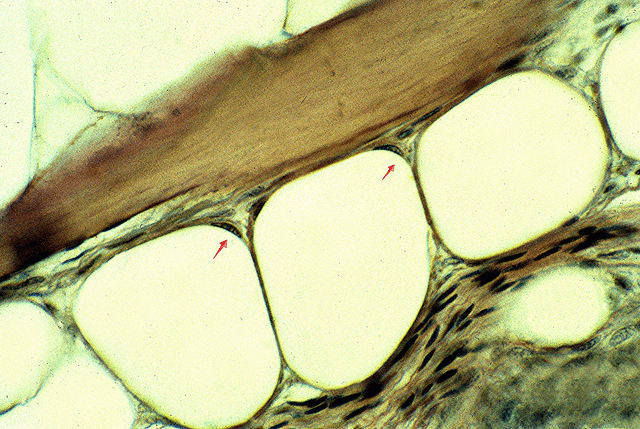A recent discovery by researchers at the University of California, San Diego School of Medicine suggests that skin adipocytes, or fat cells directly beneath the skin, play a role in defending the body from infection. Adipocytes release an antimicrobial substance called cathelicidin antimicrobial peptide (CAMP), an important molecule in the immune system that directly kills pathogens like bacteria and viruses.
Researchers conducted tests to determine if adipocytes play a role in preventing skin infections. They exposed mice to a bacterium called S. aureus that causes skin infections in humans. They later found that the number and size of adipocytes increased at the location of the infection, suggesting that the fat cells do, in fact, participate in the body’s defense against infection. It was also shown that adipocytes produce almost as much CAMP as neutrophils, a type of white blood cell. This surprising discovery of adipocytes’ pathogen-fighting abilities disproves the accepted theory that white blood cells were the body’s sole defense against infections.
Image Source: Callista Images
However, the levels of CAMP in the body can greatly impact health in humans. If CAMP levels are too low, people are more prone to infections like Staph and viral infections. High CAMP levels, commonly found in obese subjects, have been linked to autoimmune and inflammatory diseases like lupus, psoriasis, and rosacea.
This information about the role that adipocytes play in the immune response can be used to create drugs that target the new found capabilities of adipocytes. Richard Gallo, one of the researchers, sees many opportunities to study this area further.
“The key is that we now know this part of the immune response puzzle. It opens fantastic new options for study. For example, current drugs designed for use in diabetics might be beneficial to other people who need to boost this aspect of immunity. Conversely, these findings may help researchers understand disease associations with obesity and develop new strategies to optimize care.”
-Richard Gallo
Feature Image Source: P1a_015_tissu adipeux_adipose tissue_Pelvicachromis pulcher.jpg by Franck Genten










